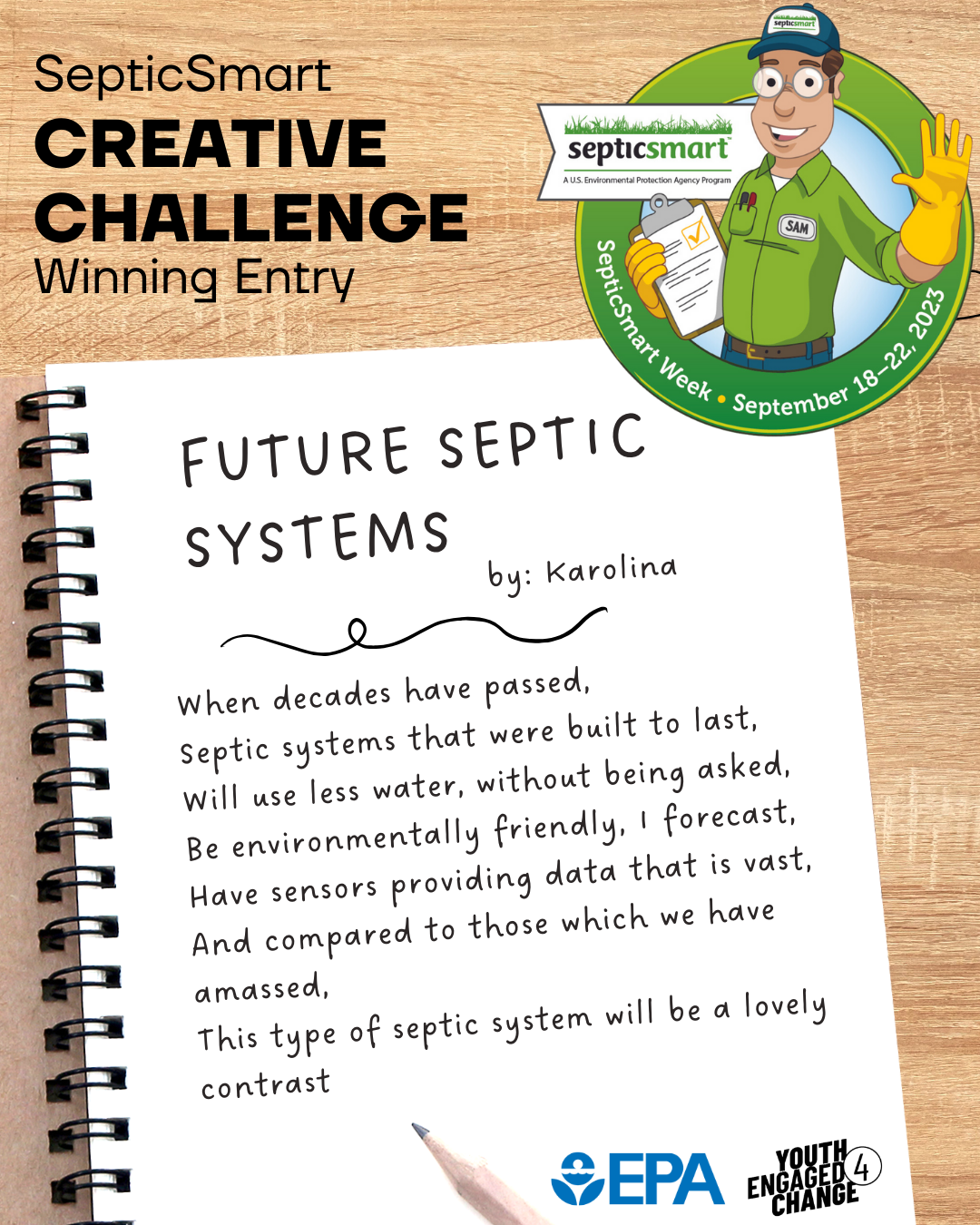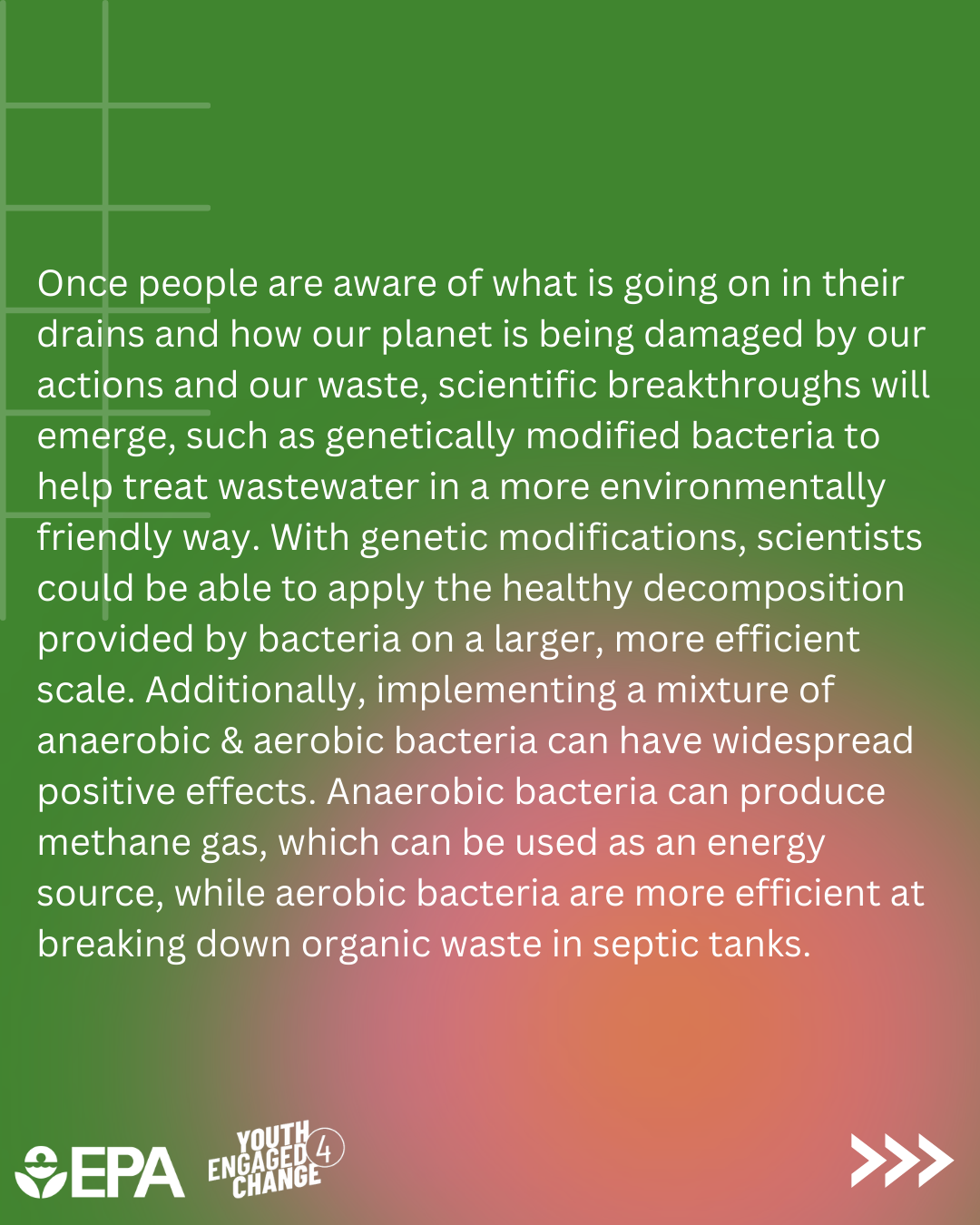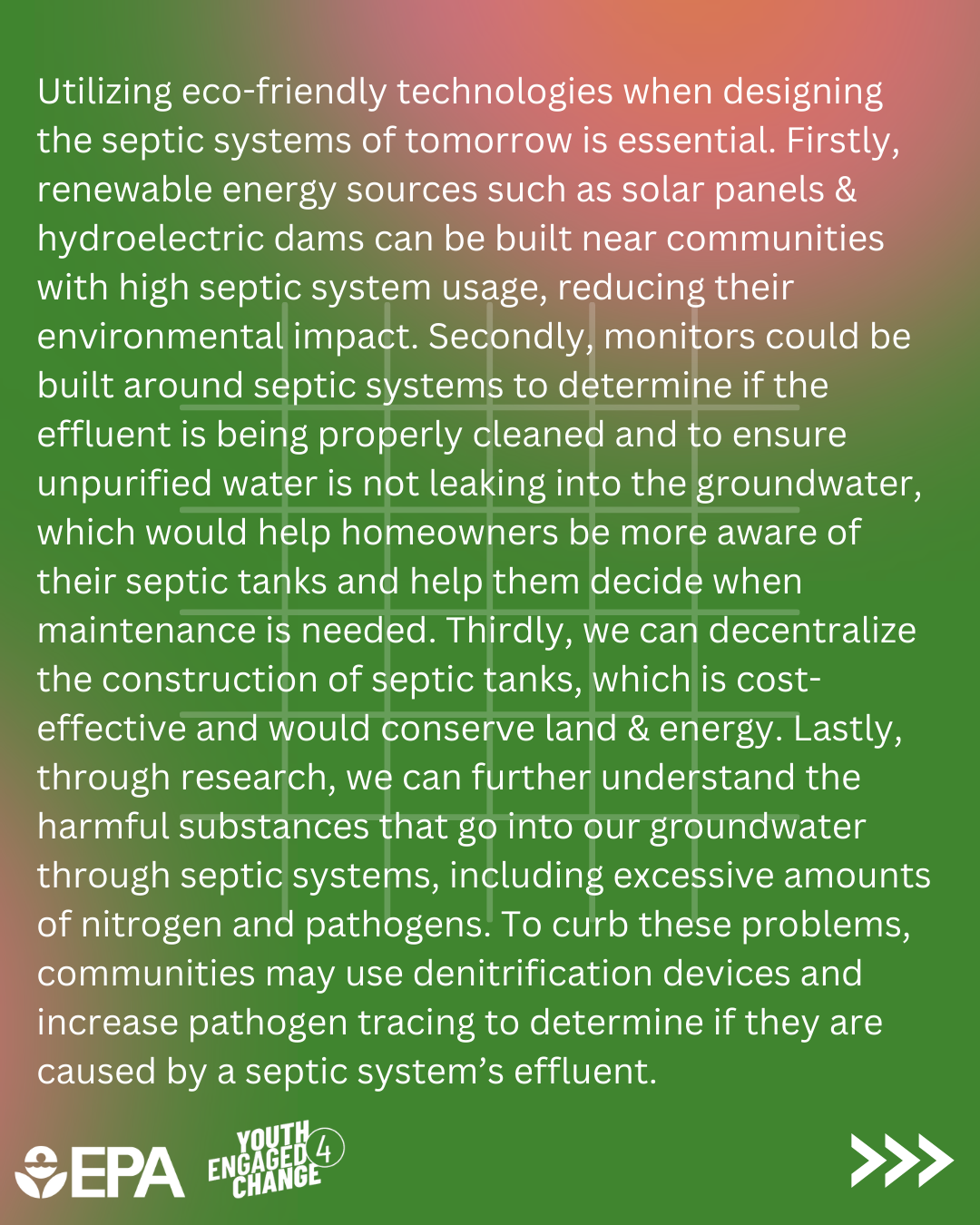Join us in congratulating Tyler, Karolina, and Ahana, winners of this year's EPA SepticSmart Creative Challenge! Each contestant was asked what “septic systems of the future” might look like and how they can sustainably safeguard community health and protect waterways.
Septic System Diagram
an essay and diagram by Tyler

This diagram represents a septic system, which includes the main line, septic tank, inspection pipes, and the drain field. These components work together to treat the wastewater that comes from a building. Whether this wastewater comes from a toilet or a sink, it travels through the main line to end up in the septic tank. Once there, the digestion of organic matter occurs while the solids in the wastewater are separated. A person can use the inspection pipes to ensure this process occurs. After going through the septic tank, the treated water goes to the perforated pipes of the drain field and ultimately discharges to groundwater.
Implementing a drain field regulator between the septic tank and the drain field could prevent drain fields from overflowing when a septic tank overflows or when there's heavy rainfall. Drain field regulators would use devices to monitor the soil moisture in and around the drain field. If the soil becomes too saturated, the drain field regulator can turn the perforated plate, dilating the size of the holes water can travel through to decrease water flow from the septic tank. Implementing the drain field regulator can prevent damage to people's yards and the foundation of their houses.





